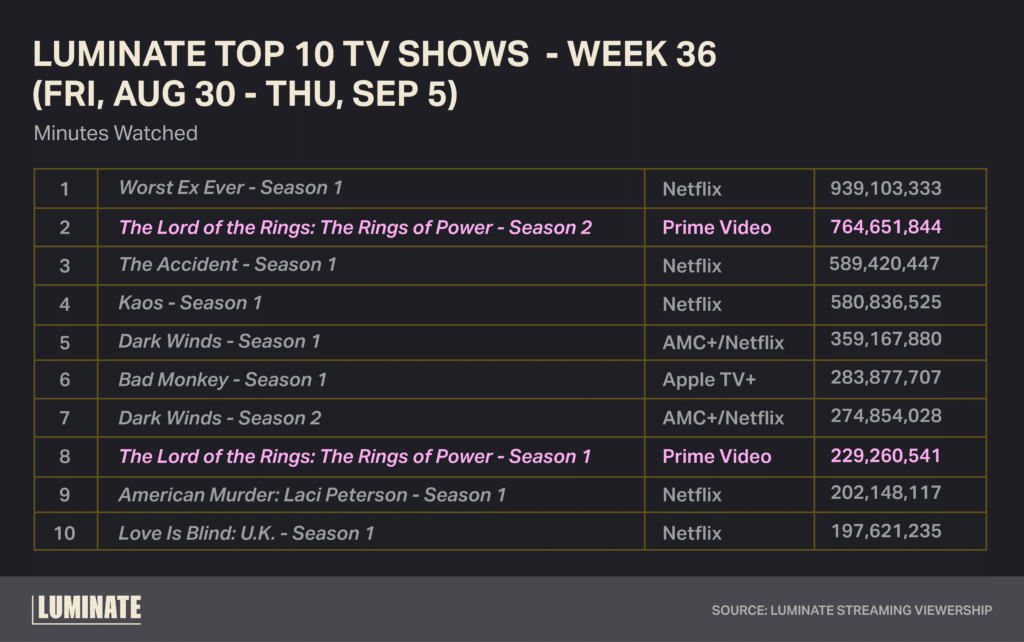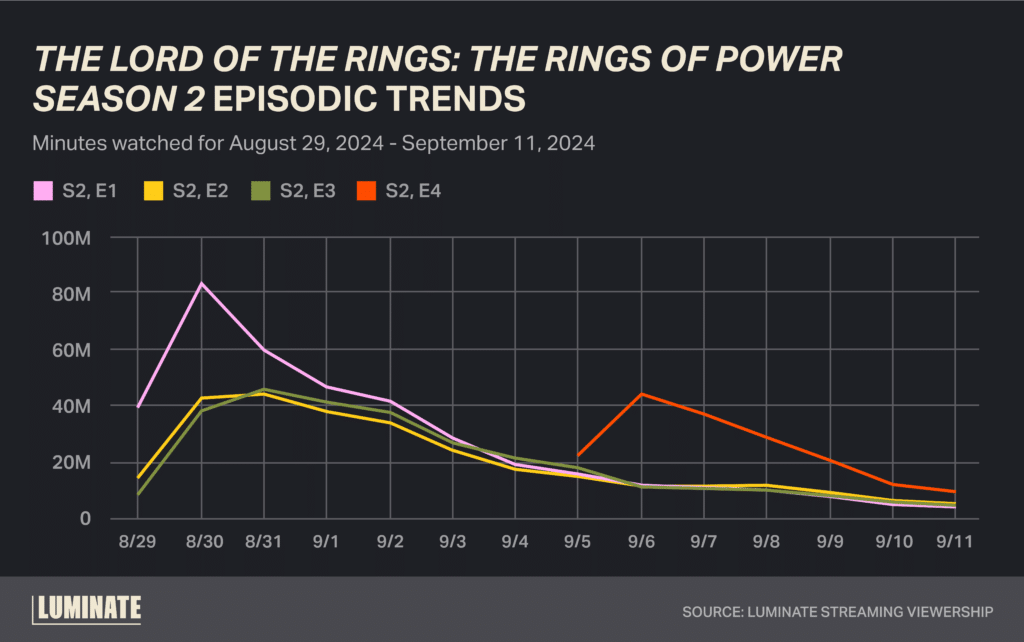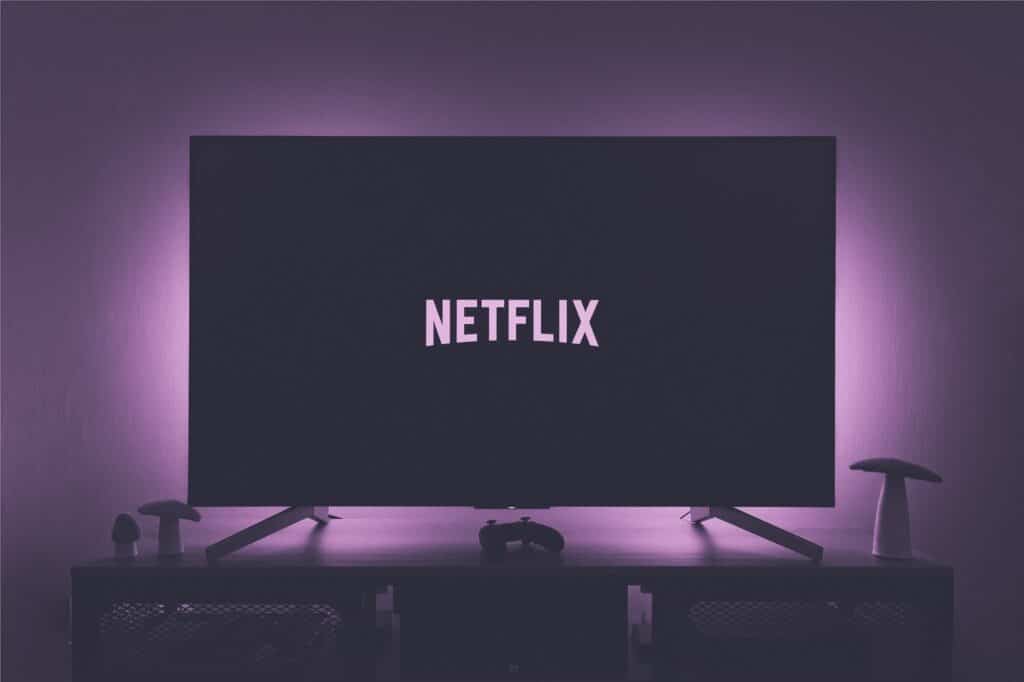Seven years ago, Prime Video bought the TV rights to The Lord of the Rings, spending a reported $250 million for the fantasy classic. Amazon spent an estimated $800 million on the first two seasons of that serial adaptation, The Lord of the Rings: The Rings of Power, initially indicating a five-season plan and commitment to the series. But just as one does not simply walk into Mordor, one does not simply get people to watch their TV show on name alone.
In its first weekend, The Rings of Power Season 2 had 2.99M views across the three episodes released. Netflix’s newest unscripted true-crime, Worst Ex Ever, had 3.57M views in that same period. The views calculation adjusts for runtime, so more people watched Worst Ex Ever over the Labor Day weekend, ultimately propelling it to No. 1 on Luminate’s final weekly chart and ahead of The Rings of Power at No. 2. Audiences can quickly burn through a binge-ready format like Worst Ex while they might wait to parse out a dense fantasy like Rings, but the soft early viewership for the Middle-earth epic seems to be a sign of waning audience interest.

There was an 18% decline in views from Episode 1 to Episode 2 of The Rings of Power in the first week of release. On the positive side for Prime Video, if someone watched Episode 2 it is likely they would continue on to Episode 3, with only a 4% decline between Episode 2 and 3. In its first weekend, Episode 4 is showing similar viewership to Episode 2 and 3, so it seems as though the viewership will level out for Rings Season 2, much like it did for Season 1.

The first season of The Rings of Power was a powerhouse hit for Prime Video despite mixed critical reception. Since 2022, it is the second biggest title for Prime Video behind Reacher Season 1. In its first 12 months, The Rings of Power Season 1 generated 15.87M full-season views. That’s very good, but not the same muscle of Reacher’s 27.01M views over the same period.
A streamer shouldn’t be criticized for making surprise hits, especially when Reacher and Rings cater to vastly different audience interests. Still, it’s hard not to compare the two when Rings cost more than 10x Reacher. That being said, we’re analyzing U.S.-only data, and Rings’ big-budget fantasy likely has broader international appeal than the more American-centric Reacher.
Regardless, the big budget paired with Prime Video’s other successes makes the drop between Season 1 and 2 of The Rings of Power concerning. In the first 11 days of release, The Rings of Power Season 2 is 70% below Season 1 in minutes watched, with one more episode available (Season 1 released two episodes on the initial drop, while Season 2 released three). For comparison, in the first 26 weeks, Reacher Season 2 has only a 12% decline in minutes watched from Reacher Season 1.

If Prime Video is truly committed to five seasons of The Rings of Power, the hope remains that audiences will continue to discover the show as new seasons are released. Season 1 saw a 124% increase in weekly viewership in Season 2’s first week on Luminate’s chart. It wasn’t so long ago that shows like Breaking Bad started slower, only to be discovered on streaming and explode in viewership by the thrilling final seasons. Since streamers are reluctant to renew slow-performing shows after two or three seasons, there aren’t many post-2019 examples of shows growing significantly throughout their run.
If anyone is positioned to make this strategy work, it’s Prime Video. They have the deep pockets to support production, fewer originals to promote and a marketing flywheel that can put ads for their content directly on your doorstep via the shipping tape on an Amazon package. Unlike Netflix, Prime Video lacks reliable formats and hits, so The Rings of Power might be their best bet. Like Sam going with Frodo, Amazon can’t abandon The Lord of the Rings now.
NOTE: “Views” calculated as Minutes Watched divided by runtime. “Views” does not represent unique viewers.


